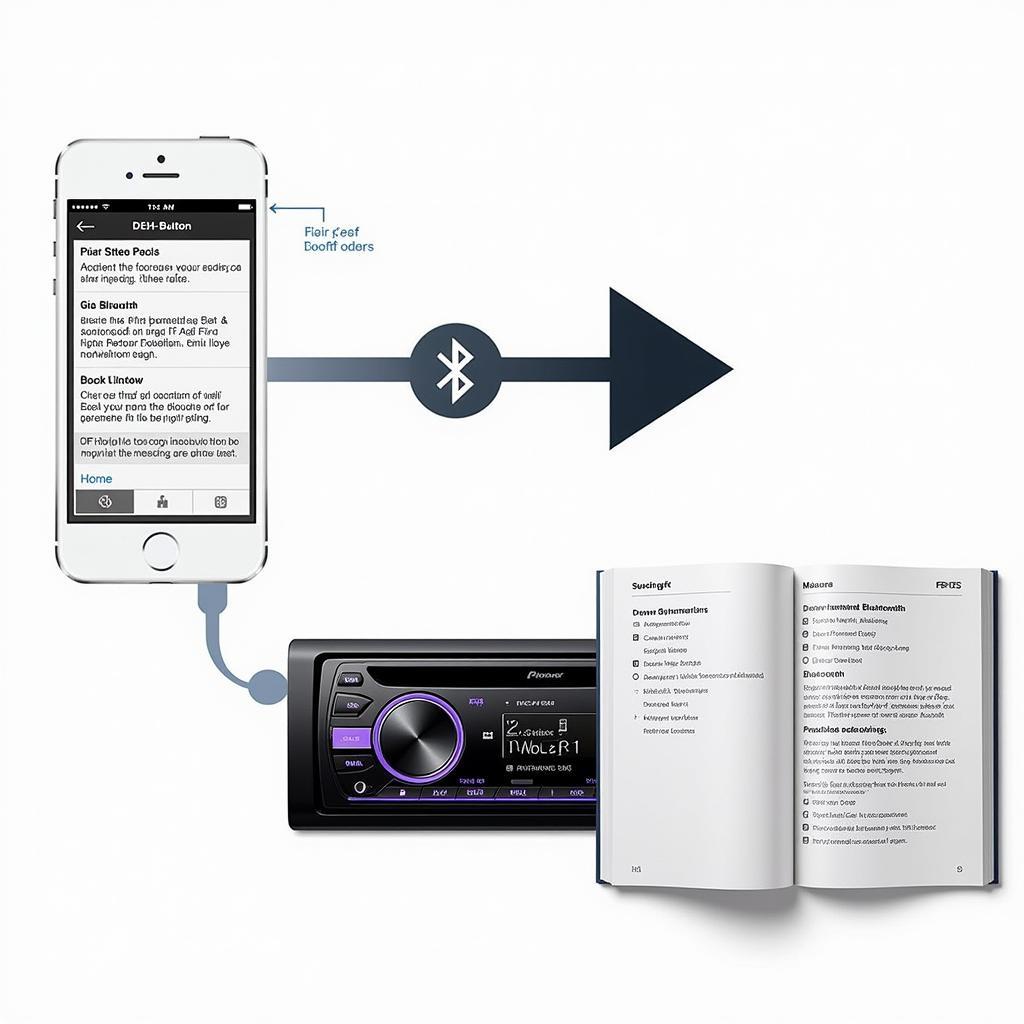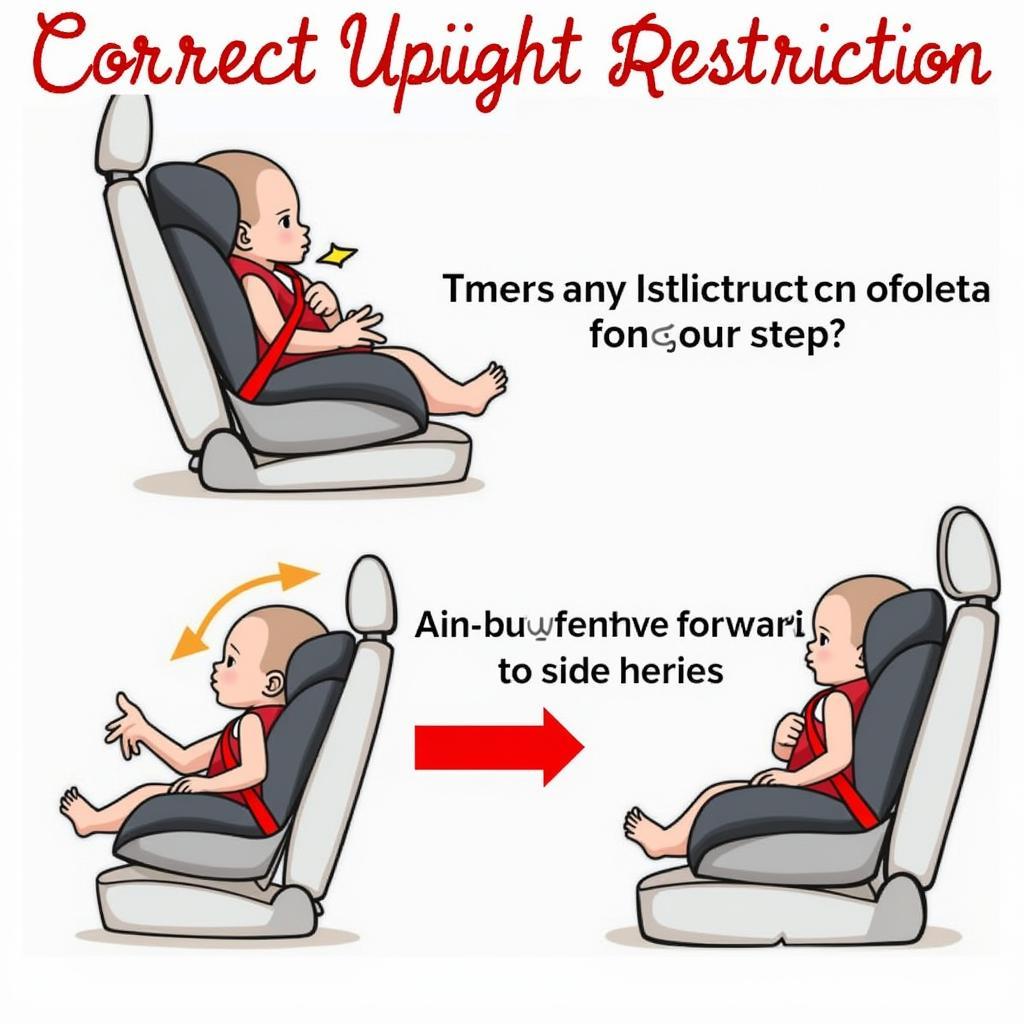The electronic brake force distribution (EBD) system warning light on your dashboard can be a cause for concern. This system is a crucial safety feature in modern vehicles, working in conjunction with your anti-lock braking system (ABS) to ensure optimal braking performance. When the EBD warning light illuminates, it signals a potential issue that needs your immediate attention.
Understanding the EBD System
The EBD system is designed to automatically distribute brake force to each wheel based on the vehicle’s load and road conditions. This intelligent system prevents wheel lockup, especially during hard braking, by regulating the amount of pressure applied to each brake caliper. By doing so, EBD enhances vehicle stability and control, reducing stopping distances and improving overall safety.
Common Causes of an EBD Warning Light
Several factors can trigger the EBD warning light. While some issues might be minor and easily addressed, others can indicate more serious problems requiring professional attention.
Here are some common culprits:
- Faulty ABS Wheel Speed Sensors: These sensors play a vital role in providing the EBD system with accurate wheel speed data. A malfunctioning or dirty sensor can disrupt this data flow, triggering the warning light.
- Low Brake Fluid Level: The EBD system relies on adequate brake fluid pressure to function correctly. Low brake fluid levels, often caused by leaks or worn brake pads, can hamper the system’s effectiveness.
- Malfunctioning ABS Control Module: This module acts as the brain of the entire ABS and EBD system. If the module experiences electrical or software issues, it can disrupt the system’s operation.
- Worn Brake Lines or Hoses: Damaged brake lines or hoses can lead to pressure loss within the braking system, impacting EBD performance.
- Hydraulic System Issues: Air bubbles or blockages within the hydraulic system can interfere with proper brake fluid distribution, potentially triggering the EBD warning light.
Troubleshooting the EBD System Warning Light
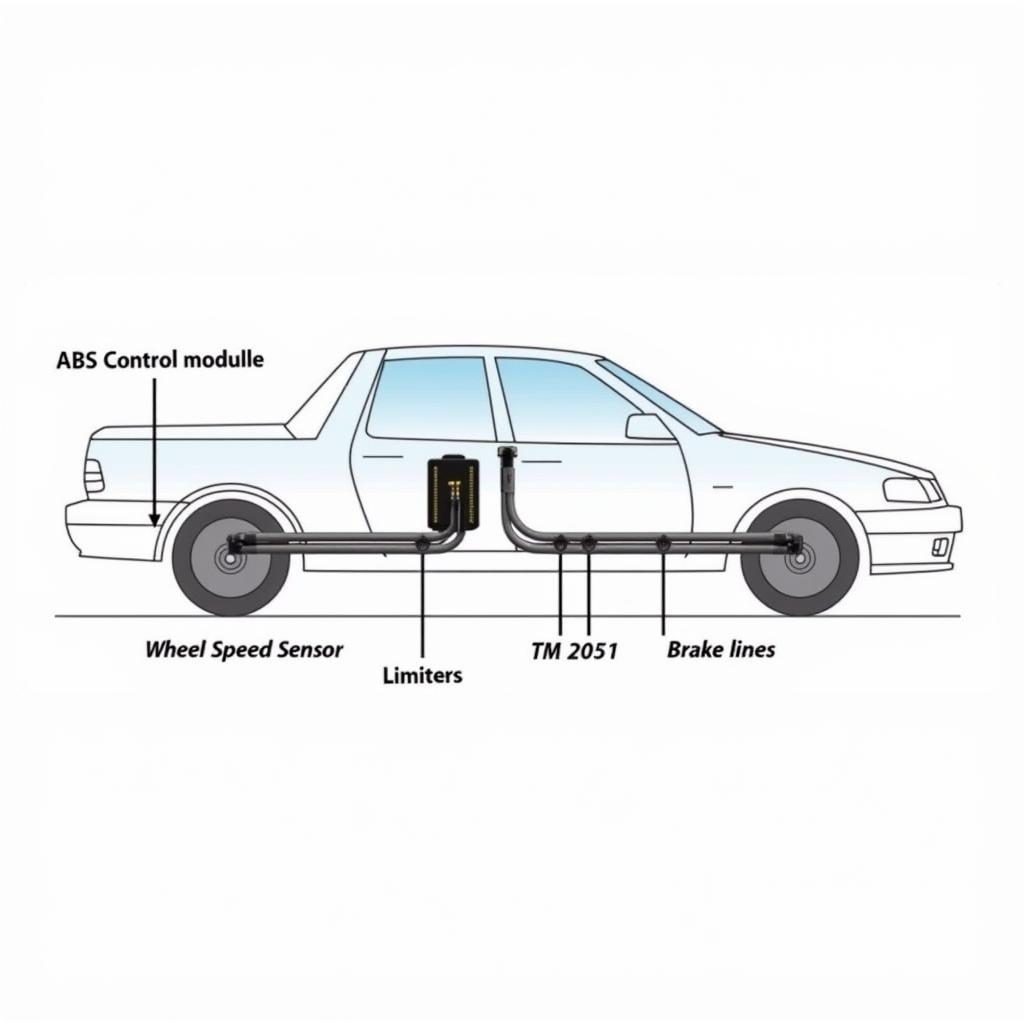 EBD System Components
EBD System Components
While a professional diagnosis is recommended, here are some initial steps you can take to troubleshoot the EBD warning light:
- Check Your Brake Fluid Level: This is the easiest and most accessible check you can perform yourself. Locate the brake fluid reservoir under the hood and ensure the fluid level is within the minimum and maximum marks. If the level is low, add the appropriate brake fluid specified in your vehicle’s owner’s manual. However, be cautious of extremely low levels as it might indicate a leak in the system, requiring immediate attention.
- Inspect Your Brake Pads: Worn brake pads can also contribute to low brake fluid levels and trigger the EBD warning light. Check your brake pads for wear and tear and replace them if necessary.
- Visually Inspect Brake Lines and Hoses: Look for any visible signs of damage, leaks, or corrosion on the brake lines and hoses. If you notice any abnormalities, consult a mechanic immediately.
When to Seek Professional Help
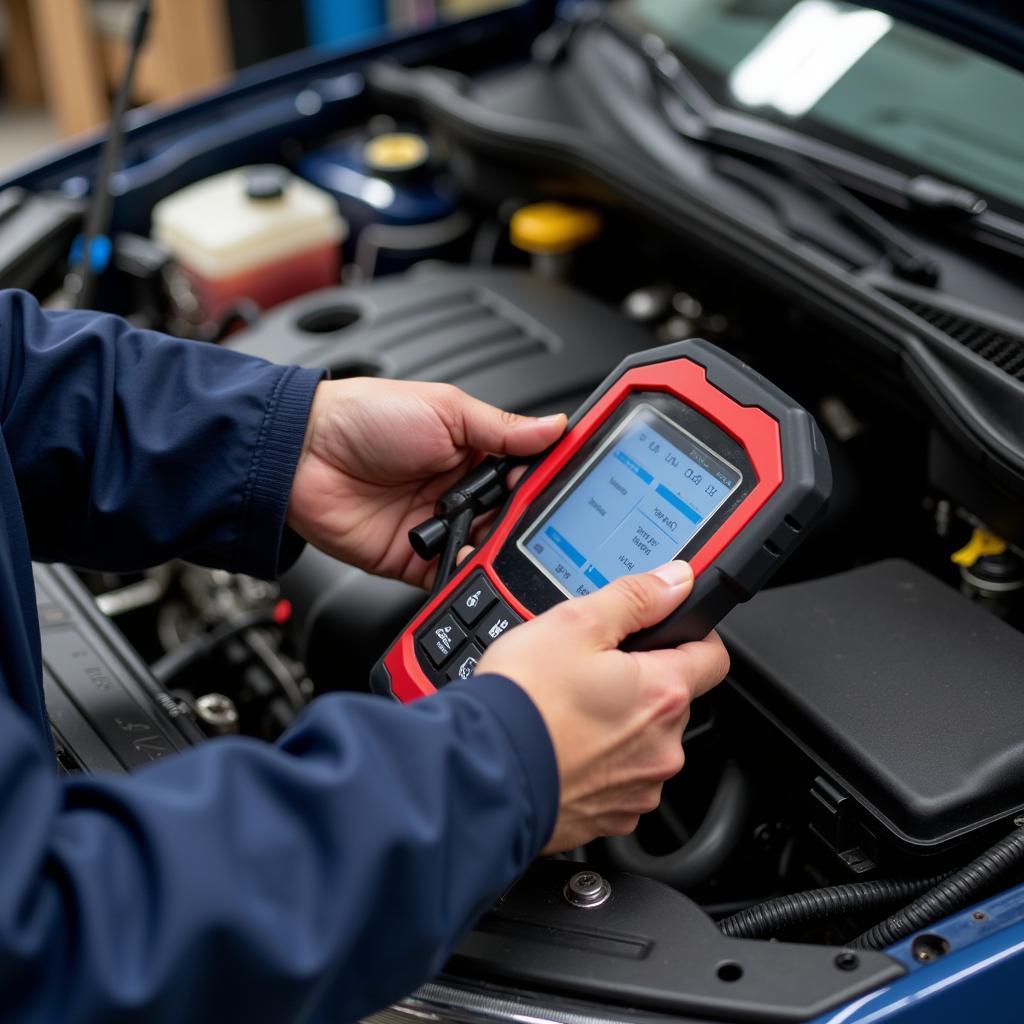 Mechanic Diagnosing EBD System
Mechanic Diagnosing EBD System
If the EBD warning light persists after performing basic checks, or if you suspect a more serious issue, it’s crucial to seek professional assistance. Driving with a faulty EBD system can compromise your safety and lead to more extensive damage.
A qualified mechanic will utilize advanced diagnostic tools to pinpoint the exact cause of the problem. They can access the system’s electronic control unit (ECU) to read fault codes, test individual components, and perform necessary repairs.
“Ignoring the EBD warning light is like ignoring a flashing red light at an intersection,” says John Smith, a certified automotive technician with over 20 years of experience. “It’s a clear indication that something is wrong, and delaying action could have serious consequences.”
EBD System Warning Light vs. ABS Warning Light
It’s important to differentiate between the EBD system warning light and the ABS warning light. Although these systems work in tandem, they have distinct warning lights. If both lights illuminate simultaneously, it usually signifies a problem affecting both systems.
mk7 transit brake warning light
Preventive Measures and Regular Maintenance
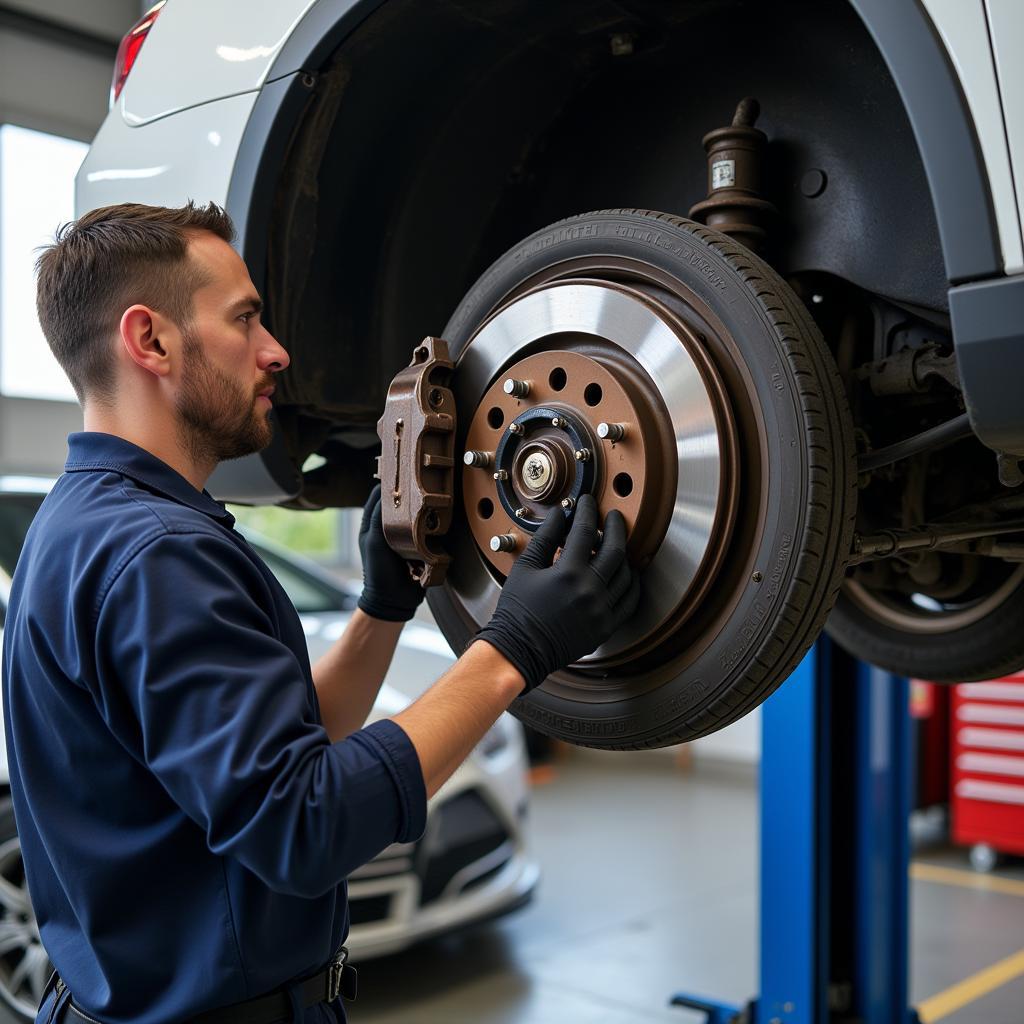 Car Undergoing Brake Inspection
Car Undergoing Brake Inspection
Like any other safety system, regular maintenance can help prevent EBD system issues. Here are some preventive measures:
- Regular Brake Fluid Flushes: Brake fluid can deteriorate over time due to heat and moisture. It’s recommended to flush and replace your brake fluid every 2 years or as specified in your owner’s manual.
- Timely Brake Inspections: Regular brake inspections, at least once a year or as recommended by your manufacturer, can help identify potential problems early on, including worn pads, leaks, or damaged lines.
- Avoid Riding the Brakes: Continuously riding the brakes can overheat the system, leading to premature wear and tear. Practice smooth braking techniques to minimize strain on your brakes and EBD system.
Conclusion
The EBD system warning light is not to be taken lightly. It’s a vital safety feature that contributes significantly to your vehicle’s braking performance and overall safety on the road. By understanding the system, recognizing potential issues, and performing regular maintenance, you can ensure its proper functioning and enjoy a safer driving experience.
Remember, if you encounter any warning lights or experience unusual braking behavior, it’s always best to err on the side of caution and consult a qualified mechanic.

